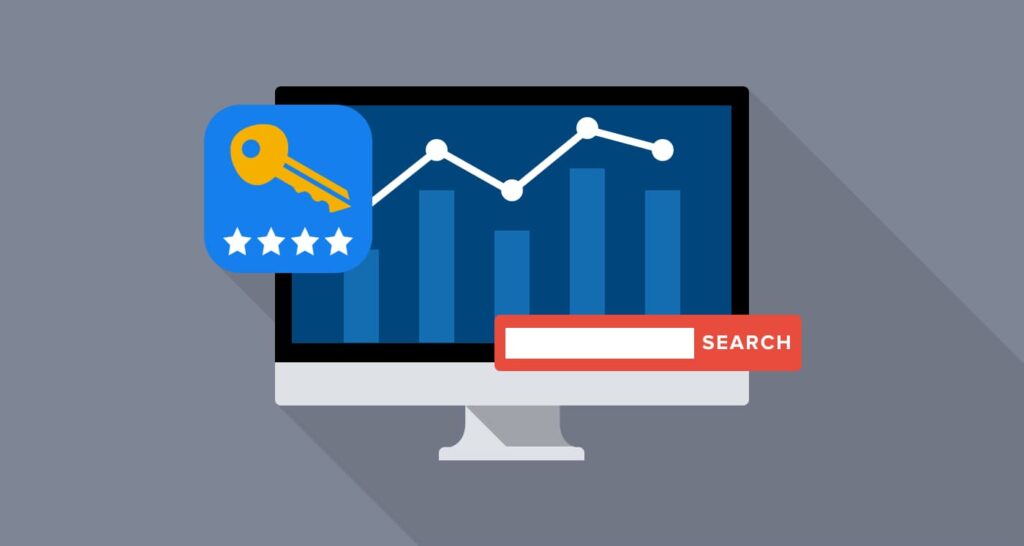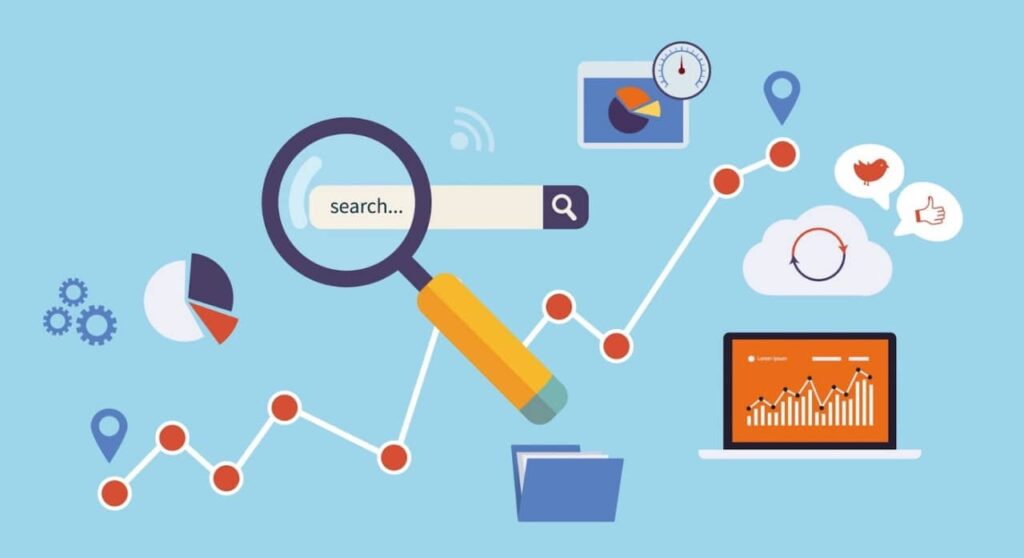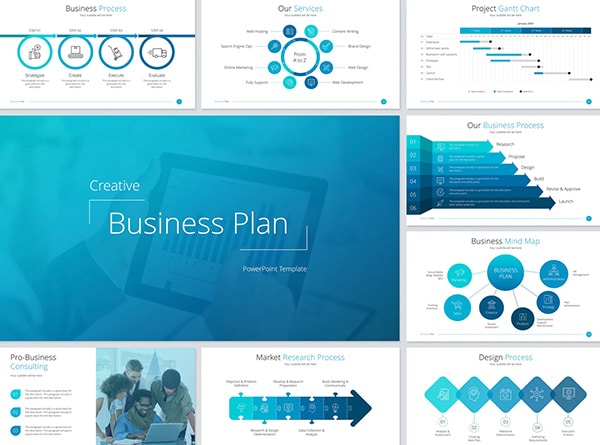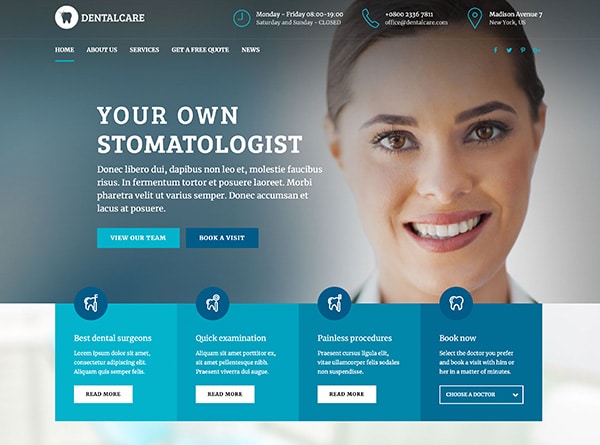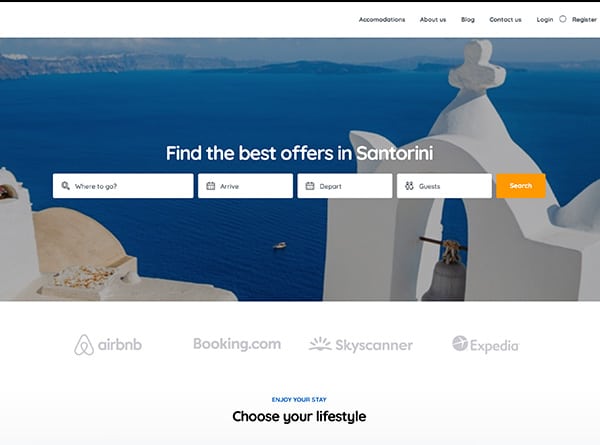
Ready to get your business website ranking higher in those coveted top spots on Google? You clicked on this article because you know SEO can work magic, but you need some pointers to get started. Well, you just found your guide to search engine optimization basics. In 9 simple steps, we’ll walk through key factors Google uses to determine where your site lands in search rankings.
Implement these SEO best practices and watch your site climb with targeted keywords. We’ll cover optimizing pages and content, backlinks, site speed, and more. You’ll be able to DIY basic SEO or at least understand what an agency is talking about. Let’s dive in and get your site noticed!
Optimize Your Website Content for Search Engines
Focus on your target keywords
Choose a primary keyword or phrase that you want your content to rank for. Make sure it’s specific and something people search for. Place this keyword in the page title, URL, headings, and a few times in the page content. But don’t overdo it, or Google may penalize you for keyword stuffing.
Include related keywords and synonyms
Use related keywords, synonyms, and phrases in your content to help search engines fully understand what your page is about. For example, if your primary keyword is “SEO services,” you could also include “search engine optimization services,” “SEO company,” and “digital marketing”.
Use headings to break up text
Headings (H2 and H3 tags in HTML) break up your content into logical sections and make it easy to read. They also signal to search engines what each section is about, so use your target keywords in some headings.
Keep your content up to date
Update your content regularly with fresh information. This is what Professional Web designing & Digital marketing companies do on regular basis. Not only will this keep your readers engaged, but search engines prefer up-to-date content. Even updating old posts with a few new paragraphs or statistics can help.
Optimize page speed and mobile-friendliness
Both page speed and mobile friendliness are ranking factors for Google. Compress images, minify CSS and JavaScript, and create a responsive design so your site loads quickly and displays well on all devices.
Use internal links
Link to other relevant content on your site. This not only improves the user experience for the people but also signals to search engines that your content is interconnected and authoritative. Just be sure to vary your anchor text and don’t over-optimize internal links.
With some time and practice, optimizing your content for search engines will become second nature. Focus on the fundamentals, keep learning, and your rankings and traffic will steadily improve over time.
Use Targeted Keywords Throughout Your Site
To rank higher in Google, you need to optimize your content for keywords that people actually search for. Do some research to find the keywords your target audience is using, then sprinkle them liberally throughout your site.
Content Pages
Focus on using your target keywords in your page titles, headings, and 2-3 times in the body content. Don’t overdo it, though – your writing should still sound natural. A good rule of thumb is to aim for a keyword density of 3-5% for the best results.
Page URL
Include your main keyword in your page URL. For example, if your keyword is “dog training tips”, your URL could be www.yourwebsite.com/dog-training-tips. This simple step helps Google understand what your page is about.
Alt Text
Add alt text to your images that includes your target keywords. The alt text is a description of the image that helps search engines understand what the image is about. For example, if you have an image of a dog, your alt text could be “Dog receiving training command”.
Internal Links
Link to other relevant content on your site using keyword-rich anchor text. For example, instead of linking to a page called “About Us” with the text “Click here”, use “About Our Dog Training Services”. This helps search engines discover more of your important content.
Meta Title and Description
Include your target keywords in the meta title and description for each page. The meta title is the title that appears in search results, while the meta description is the short summary under the title. A good meta title should be under 60 characters, with your main keyword near the front. The meta description should be under 160 characters and contain your keyword at least once.
Optimizing for keywords throughout your site is one of the most effective ways to improve your search rankings and drive more organic traffic. Put in the work to do it right, and you’ll reap the rewards with higher search visibility and more leads.
Improve Your Site’s Technical SEO
Site Speed
A fast-loading website is essential for ranking higher in Google. Google factors page speed into its search rankings, so improving your site speed is one of the most impactful things you can do. Aim for a page load time under 3 seconds. You can use free tools like Google’s PageSpeed Insights and GTmetrix to analyze your site speed and get recommendations for improvements. Some things you can do to speed up your site include:
- Optimizing images by compressing them and using responsive image sizing.
- Minimizing redirects and fixing broken links.
- Enabling browser caching so repeat visitors don’t have to reload assets.
- Minifying CSS and JavaScript files.
Mobile-Friendliness
With more and more people accessing the web via mobile devices, having a mobile-friendly site for SEO is critical. Make sure your site is optimized for mobile devices. You can use the Mobile-Friendly Test from Google to check if your site is mobile-friendly and get tips for fixing any issues. Some key things to check are:
- That your site reformats nicely on smaller screens.
- Font sizes are large enough to read on a phone.
- CTAs and links have adequate spacing to easily tap on a touchscreen.
- The mobile menu is easy to navigate.
Schema Markup
Adding structured data markup to your site, known as schema, helps Google better understand your content. When used properly, schema can improve your click-through rate in search results and rankings. The main types of schema you’ll want to use are:
- Schema for business info like opening hours and contact details.
- Schema for blog posts, recipes, products, etc. to highlight key details.
- Breadcrumb schema to show the path from your homepage to the current page.
- FAQ schema for frequently asked questions pages.
Spending time on your site’s technical SEO is one of the most high-impact things you can do to rank higher in Google. Keep optimizing and monitoring to make sure your site is as fast, mobile-friendly, and rich in schema as possible. With regular attention, you’ll start to see big improvements in your search traffic and rankings.
Build Backlinks to Your Site
Backlinks are links from other authoritative websites that point back to your site. They help establish your credibility and authority to search engines like Google. The more high-quality backlinks you have, the higher you’ll rank in search results.
Guest Blog on Industry Websites
Guest blogging on other well-trafficked sites in your industry is an easy way to build backlinks. Pitch the editors of industry publications and offer to write an informative blog post for their audience. Be sure to include a link back to your site in the author bio. Over time, these posts can generate referral traffic and backlinks to boost your authority.
Get Profiled
Reach out to journalists and industry influencers and offer to be interviewed or profiled for their publication or podcast. An in-depth profile will likely include several links back to your site. Pitch yourself as an expert in your field and share how you can provide value to their audience.
Start a Referral Program
Create a referral program where you offer an incentive for people to refer your business to others. It could be a discount, gift card, or free service. When someone refers your site, ask them to include a link back to you. Referral links from happy customers are like gold to search engines.
Comment on Industry Blogs
Find the top blogs in your industry and become an active participant in the conversation. Post insightful comments on blog posts and include a link back to a relevant page on your own site. Make sure your comments provide value to readers rather than just being self-promotional. Blog owners often appreciate commenters who contribute to the discussion.
Building a strong portfolio of high-quality backlinks takes time and effort but is well worth it for achieving higher rankings and more organic traffic. Focus on relationship-building, providing value to others, and making genuine connections within your industry. The backlinks and rankings will follow. Keep at it, be patient and consistent, and your site will start climbing higher in the SERPs over time.
Create Compelling Title Tags and Meta Descriptions
Title tags and meta descriptions are two of the most important on-page SEO elements for ranking higher in Google. The title tag is the clickable headline for your page that appears in search results. The meta description is the short summary under the title that tells searchers what the page is about.
Optimize Your Title Tag
Your title tag should be an accurate and concise summary of the page content. Aim for 55 to 60 characters, including spaces. Use your target keyword at the beginning of the title, and include your company name or brand at the end. For example:
- 9 Easy Ways to Rank Higher on Google | Orange County SEO Agency
Write a Persuasive Meta Description
Your meta description should be a compelling summary of your page content in 150 to 160 characters. Use your target keyword at least once, highlight your value proposition, and end with a call to action to click. For example:
Learn 9 proven strategies to rank higher in Google search results. Our OC SEO agency shares tips to optimize your content and drive more organic traffic. Read more!
Use Power Words
Include power words and phrases in your title and meta description to capture attention, like “secrets,” “success,” “proven,” “expert,” “authority.” These persuasive words encourage people to click through to your page.
Optimize for Mobile
With more than 50% of searches happening on mobile devices, optimize your title and meta for small screens. Keep descriptions short and include only the most important information. The title tag and meta description may be cut off on mobile, so put the most critical info at the beginning.
By crafting compelling title tags and meta descriptions that include your target keywords, you can improve your click-through rate from search results and rank higher in Google. Optimizing for both desktop and mobile will ensure the best results. Keep experimenting and testing different options to find what works best for your audience.
Optimize Images With Alt Text and File Names
Add Alt Text to Images
When you upload images to your page or post, be sure to fill in the “alt text” field for each image. The alt text is a brief description of the image that helps search engines understand what the image is about. It also helps visually impaired users who use screen readers to navigate the web. Keep your alt text concise but descriptive, around 5 to 15 words. For example, if you have an image of a dog, your alt text could be “A brown Labrador retriever sitting on the grass.”
Use Keywords in File Names
The file names of your images also provide an opportunity for optimization. When saving your images, use file names that incorporate your target keywords, such as “labrador-retriever-dog.jpg” or “SEO-tips-checklist.png.” Search engines factor image file names into their ranking algorithms, so this is an easy way to give your page a boost.
Compress Your Images
Large image file sizes can slow down your page load time and frustrate visitors. Use an image compressor tool to reduce the file size of your images before uploading them. Many are available for free online. Aim for images under 100KB for best results.
Add Images to Your Page
Having visuals on your page not only makes for a better user experience but also gives you more opportunities to optimize for search engines. Aim for at least one eye-catching, high-quality image for every 300-500 words of text. Make sure the images are relevant to your content and placed in logical spots within your page.
Optimizing your images is one of the easiest ways to give your search rankings a boost. By adding alt text, using keyword-rich file names, compressing your images, and including plenty of relevant images on your page, you’ll make it easier for Google to fully understand and rank your content.
Improve Site Speed and Mobile Optimization
If your website takes forever to load, visitors won’t stick around to read your content. Google also factors site speed into its ranking algorithm, so improving performance is a win-win. Here are a few ways to pick up the pace.
Compress Images
Large image files significantly slow down page loading. Use a tool like TinyPNG to compress your images without sacrificing quality. For photos, aim for a size of 1MB or less.
Minimize Code
The more code on your page, the longer it takes to load. Remove any unused CSS, JavaScript, or HTML from your site. Consider using a content optimization service to clean up your code.
Enable GZIP Compression
GZIP compression reduces the size of web pages by as much as 70% before they are sent from the server. Most content management systems and hosting providers offer a simple checkbox to enable this feature. Click it.
Optimize for Mobile
Over half of web traffic now comes from mobile devices. If your site isn’t optimized for smaller screens, you are missing out on a huge number of potential visitors and search rankings. Responsive web design, a mobile-friendly theme, and accelerated mobile pages (AMP) can all help give your mobile visitors a great experience.
Google wants the web to be fast and accessible for all. By optimizing your images, cleaning up code, enabling compression, and optimizing for mobile, you’ll improve the user experience, rank higher in search results, and boost traffic and engagement. Speed and mobile friendliness are easy wins with a big payoff. Time to make them a priority!
Analyze Your Site’s SEO With Google Analytics
Google Analytics is one of the most powerful tools for understanding how people find and use your website. Connecting your Google Analytics account to your site is crucial for improving your search ranking and organic traffic.
Once set up, Google Analytics will track metrics like pageviews, bounce rate, time on page, and entrance/exit pages. Reviewing this data helps determine which content is resonating with readers and which could use improvement. Are there pages with a high bounce rate? If so, you may need to rework the content or page layout. See which search terms are driving the most traffic to your site. Use those terms in your page titles, headings, and content.
Google Analytics also shows you where your traffic is coming from. The majority should be organic search, meaning people found you through search engines like Google. If most of your traffic is social or referral, work on optimizing for search engines. Check which countries and cities your visitors are from. You may want to optimize for location-specific search terms or translate some content.
One of the most useful reports is Site Content > All Pages. This shows metrics for each page of your site. Sort pages by pageviews, bounce rate, and average time on page. Pages at the top are prime opportunities for interlinking to boost your internal link profile. Pages at the bottom may need reworking or removal.
Google Analytics is a must-have tool for anyone serious about search optimization. While the interface can be overwhelming at first, focus on the basics. Monitor key metrics, see how people find your site, determine high- and low-performing content, uncover issues to fix, and find easy link-building opportunities. Making data-driven decisions will lead to improved search rankings and more organic traffic.
With regular analysis of your Google Analytics and implementing changes based on the insights, your website will be well on its way to the coveted first page of Google.
SEO FAQs: Answering Common Search Engine Optimization Questions
So you’ve optimized your page titles, crafted compelling meta descriptions, sprinkled in some internal links and are ready to start ranking higher in Google’s search results. But you probably still have some questions about SEO and how it really works. No worries, we’ve got you covered.
How long does it take to rank higher organically?
Ranking well organically can take months or longer of consistent SEO work. SEO is not a sprint, it’s a marathon. The time it takes depends on your current rankings, how competitive your industry is, and how aggressively you pursue SEO best practices. Focus on optimizing your site over the long-term and be patient.
Do I need to blog to rank higher?
Blogging is one of the best ways to rank higher organically. Fresh, high-quality content helps search engines discover your site and gives them a reason to rank you higher. Aim for publishing 2-4 blog posts per month, with each post targeting a different keyword. Your posts should be at least 500 words and cover topics your potential customers care about.
Should I do it myself or hire an agency?
Doing SEO yourself can be challenging and time-consuming. If you have the budget, hiring an agency is often a good idea, especially when you’re first getting started. Look for Local SEO agencies a proven track record of success in your industry. They’ll have the experience to get results faster. If funds are limited, you can do some basic on-page optimization yourself, then hire an agency for off-page work like link building.
How do I know if my SEO is working?
The best way to tell if your SEO efforts are paying off is to track your rankings and traffic. Monitor your keyword rankings in Google Search Console to see if they’re improving over time. You should also keep an eye on organic traffic in Google Analytics. As your rankings rise and traffic increases, you’ll know your SEO work is having an impact. Small wins, like moving up just a few spots for a keyword, show you’re on the right track.
Keep refining your SEO strategy and stay up-to-date with Google’s best practices. With time and consistency, you’ll start ranking higher and higher in search results. Let me know if you have any other questions!
Conclusion
So there you have it, the 9 keys to SEO success. Now that you know the basics, it’s time to put these tips into action. Start optimizing existing content and planning new pages with search intent in mind. Spend time building quality backlinks and cleaning up technical issues. Monitor your site’s progress in search rankings, traffic, and conversions. SEO takes dedication, but the payoff for higher visibility is well worth the effort. Stay focused on providing value for readers, and search engines will reward you in turn. Good luck ranking higher! With smart strategies and persistence, you’ll be well on your way to search engine stardom.
Urban Geko Design: Your premier choice for top-notch SEO services. Contact us today to let us help you rank higher in your SEO.

